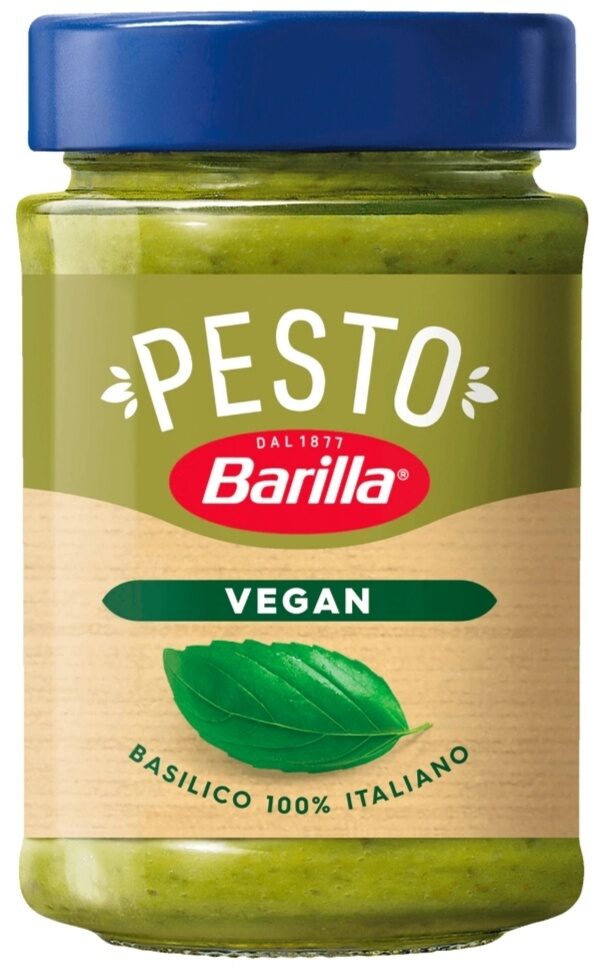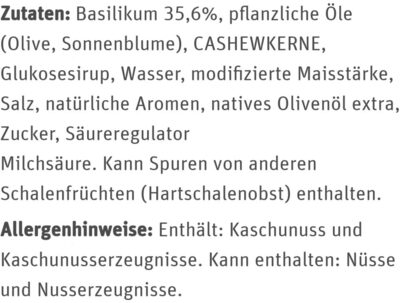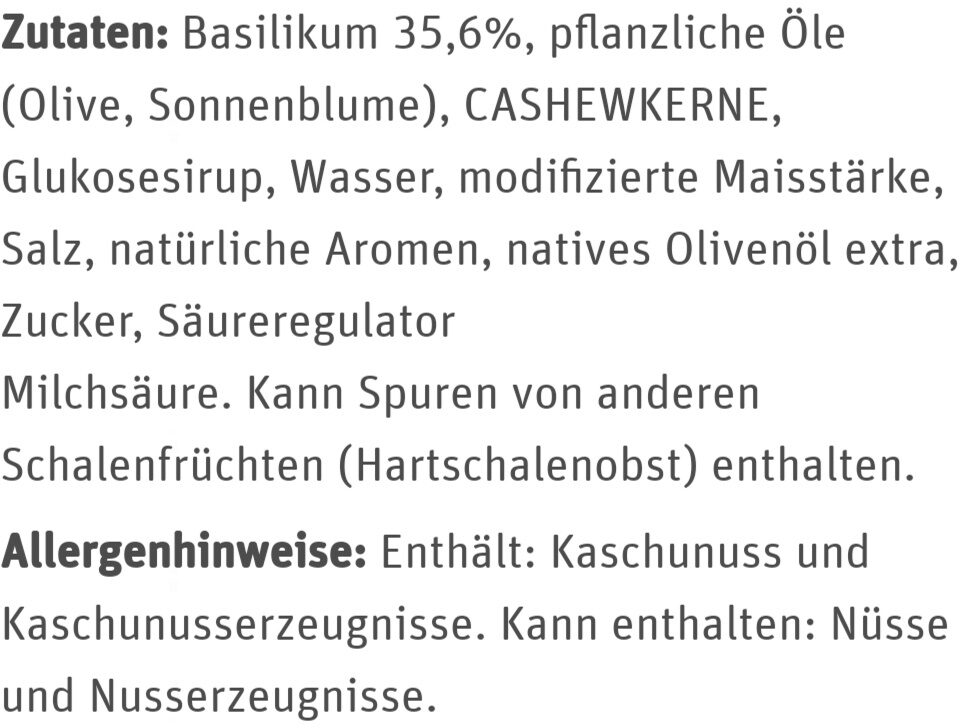Vegane Pesto Sauce mit Basilikum - Barilla - 195g
This product page is not complete. You can help to complete it by editing it and adding more data from the photos we have, or by taking more photos using the app for Android or iPhone/iPad. Thank you!
×
Some of the data for this product has been provided directly by the manufacturer .
Barcode: 8076809572569 (EAN / EAN-13)
Quantity: 195g
Packaging: Metal, Glass, Jar, fr:Couvercle en métal, fr:pot en verre
Brands: Barilla
Categories: Condiments, Sauces, Pasta sauces, Pestos, Green pestos, Groceries
Labels, certifications, awards:
No gluten, Vegetarian, Vegan, Green Dot, Made in Italy
Link to the product page on the official site of the producer: https://www.barilla.com/fr-fr/produits/s...
Stores: Auchan, carrefour.fr, REWE, Woolworths
Countries where sold: France, Germany, Switzerland
Matching with your preferences
Report a problem
Data sources
Product added on by kiliweb
Last edit of product page on by prepperapp.
Product page also edited by aleene, barilla, barilla-off, cafe-einstein, date-limite-app, driveoff, ecoscore-impact-estimator, foodvisor, fpdsurveys, grumpf, inf, itsjustruby, lcmortensen, lily14, m4rius, mark101080, markusloew, monsieurtanuki, openfoodfacts-contributors, org-barilla, packbot, pamelamp, psine, quechoisir, roboto-app, sandman095, scanbot, sebleouf, tacite-mass-editor, teolemon, wolfgang8741, worldtest, yuka.V1poWlQ3MFJpS05ibDhjNjd5dkwwY3A1bWJtNWRsT3VCYk1qSVE9PQ, yuka.ZEpvd0lyd1R0LzRLa2NNUjdEUEs4K0JrNElieGRtV09Pc2tCSVE9PQ, yuka.ZXFJOUtxVW1nY0UwbDhNeTNRN1IxWXh0eHJ5WUFtYW5kTHNBSWc9PQ, yuka.sY2b0xO6T85zoF3NwEKvlk13TeaPmh3YDULmhU6S-uyBApnsZOB_3Zb8Lqg.












